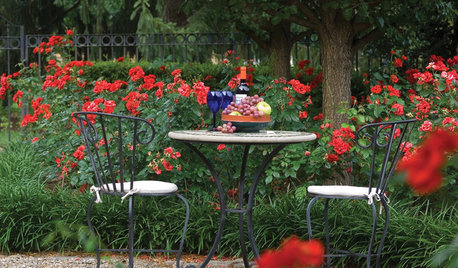Grafting with Hybrids?
woodcutter2008
11 years ago
Related Stories

EDIBLE GARDENSHow to Grow Your Own European and Asian Pears
Try these trees for their good looks, delicious fruit and wide range of sizes — plus you can espalier them
Full Story
EDIBLE GARDENSHow to Grow 10 Favorite Fruit Trees at Home
Plant a mini orchard in fall, winter or early spring to enjoy fresh-off-the-tree fruit the following year
Full Story
WINTER GARDENINGPruning Secrets for Exquisite Roses
Encourage gorgeous blooms year after year with this time-tested advice on how to prune your rosebush in winter for health and shape
Full Story
GARDENING GUIDES6 Wonderfully Easy Roses for Any Gardener
Look like an expert even if you're just starting out, with these low-maintenance gems of the rose world
Full Story
GARDENING GUIDESTree Care: Common Tree Diseases and What to Do About Them
Learn to recognize trees that may be affected by diseases or pests so you can quickly take action
Full Story
GARDENING GUIDES5 Red Roses to Stir Garden Passions
Show your devotion to color, scent and more with these regal landscape beauties
Full Story
LANDSCAPE DESIGNWater-Saving Landscaping Ideas for Traditional Homes
Who says you need a lawn and roses in front of your traditional house? Try some of these drought-tolerant beauties instead
Full Story
GARDENING GUIDES12 Japanese Maples for a Sunny Garden
The right maple in the right place shines in hot summer sun
Full Story
GARDENING AND LANDSCAPINGHow to Start a Home Vineyard
Dreaming of a winemaker's life? You may be able to have it where you are
Full Story






carolyn137
socalgal_gw Zone USDA 10b Sunset 24
Related Professionals
Windham Landscape Architects & Landscape Designers · Glassmanor Landscape Architects & Landscape Designers · Seabrook Landscape Architects & Landscape Designers · Gainesville Landscape Contractors · Ridgewood Landscape Contractors · Riverhead Landscape Contractors · Saint George Landscape Contractors · Eau Claire General Contractors · Gloucester City General Contractors · Henderson General Contractors · Markham General Contractors · South Windsor General Contractors · Tabernacle General Contractors · Toledo General Contractors · Miami Decks, Patios & Outdoor Enclosureswoodcutter2008Original Author
carolync1
barrie2m_(6a, central PA)
Cdon
smithmal
seysonn
rnewste
smithmal
barrie2m_(6a, central PA)
rnewste
fcivish
smithmal
yardenman
yardenman
sada
mule
kerns125
Seysonn_ 8a-NC/HZ-7
Malcolm Smith
Seysonn_ 8a-NC/HZ-7
kerns125
smithmal
kerns125
Seysonn_ 8a-NC/HZ-7
charleyball777